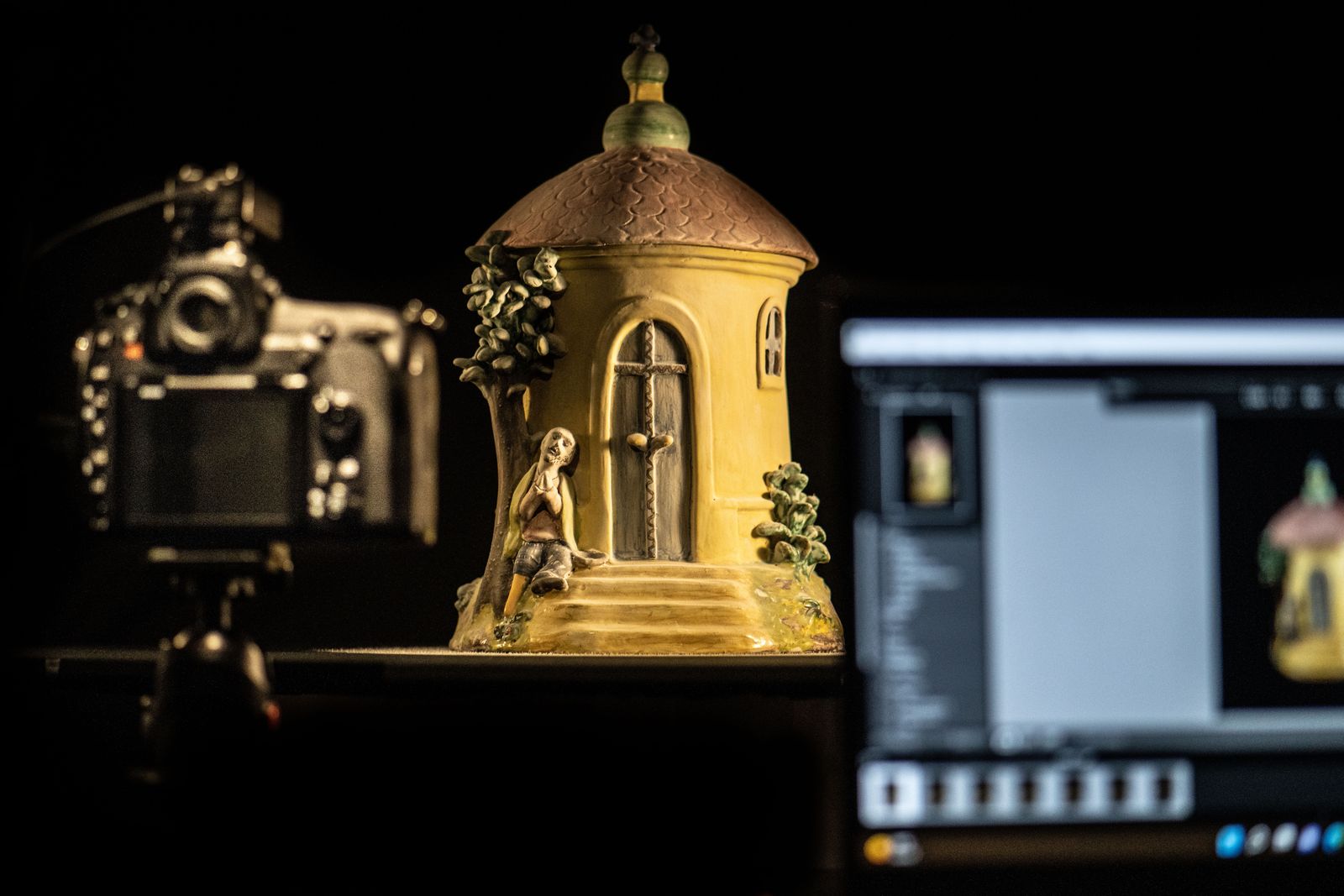Digitization of the Ferdis Kostka folk art pottery collection
The Little Carpathians Museum in Pezinok has been under the founding authority of the Bratislava Self-Governing Region since 2002 and owns a large collection of Ferdis Kostka ceramic and pottery. Kostka fulfilled an important national mission as he honored simple folk life and his small figural compositions have significant place in the Slovak art as a valuable example of true folk art.
CHALLENGE
There is a need for historic ceramic with local features to be digitized and preserved to enable the world to comprehend the subtleties of the traditional techniques as well as the rich creativity of Slovak artists. The establishment of metadata and a database system are also required to properly preserve and utilise archive resources. Ferdis Kostka was one of the best known and respected Slovak ceramics artist and his collection contains more than 500 various objects dated to the beginning of the 20th century.
Kostka was a descendant of an old potter’s family, continued in the tradition specializing in pottery and developed the folk faience into applied, decorative and figural ceramic production. He later on combined ancient Haban elements with the artistic tradition of his family, varying inherited patterns.
SOLUTION
Since the advent of the digital era, the application of new digital technologies within cultural heritage has proven beneficial for the study, exhibition, and conservation of cultural heritage objects. Digital photography has facilitated easier file sharing, simplified access to information, and the accurate display of condition.
The overarching goal of this project was to assess the ability of current digital technologies and data acquisition, to assist in the treatment of the whole Kostka collection. We collaborated on the digitization of more than 400 objects with our partner company Artzenal.
„In Today’s era of digitisation, I have no doubt, Piql met all our needs. Digital restoration is faster, can be easily edited or redone, and offers a different visual perception of the artifact”
Svetlana Waradzinova, Bratislava Self-Governing Region
FUTURE
The essence of this work is to create an electronically accessible catalogue of valuable pottery collection. With the rapid development of new digital 3D technologies, 3D models have great potential not only for research but also for scholars. Digital technologies become more accessible and user-friendly, therefore innovations in their use and application are continually expanding. Digital models of historical objects have become a valuable tool in study, and conservation.

